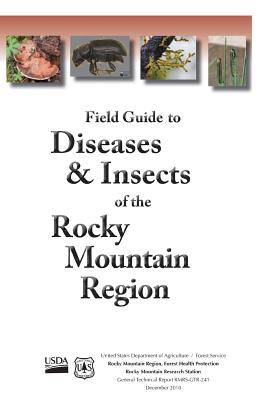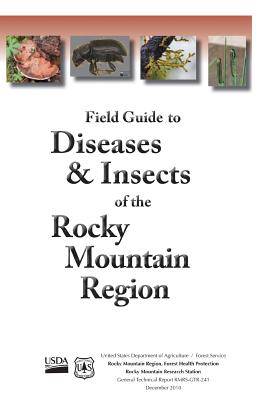
- Afhalen na 1 uur in een winkel met voorraad
- Gratis thuislevering in België vanaf € 30
- Ruim aanbod met 7 miljoen producten
- Afhalen na 1 uur in een winkel met voorraad
- Gratis thuislevering in België vanaf € 30
- Ruim aanbod met 7 miljoen producten
Zoeken
Field Guide to Diseases & Insects of the Rocky Mountain Region
Forest Service, Rocky Mountain Region Health Protection, Rocky Mountain Research Station
Paperback | Engels
€ 42,95
+ 85 punten
Omschrijving
This field guide details the most commonly encountered diseases and insects of forest trees in the Rocky Mountain Region. Descriptions of diseases, insects, and physical injuries focus on the most diagnostic features of each. Photographs, line drawings, and tables are used to illustrate and emphasize characteristics described in the text. Diseases and insects in plains hardwood trees are not covered in depth. Ornamental trees are sometimes affected by the diseases or insects included in this guide but may not be specifically mentioned as hosts. This guide presents diseases and then insects. Entries are arranged according to the part of trees typically damaged by the agent described. The disease section describes dwarf and true mistletoes, decays (including root diseases and stem decays), cankers, wilts, rusts, foliage diseases, shoot blights, and abiotic injuries and miscellaneous diseases. The insect section describes bark beetles, defoliators, wood borers, sap-sucking insects, gall formers, mites, and bud and shoot insects. At the end of the guide is a subject index, a host-pest index to damaging agents by tree species and part of the tree affected, and a glossary of terms. The host-pest index provides a rapid means of assessing the number and variety of agents described for each tree species. This field guide applies to the USDA Forest Service's Rocky Mountain Region, which includes Colorado, Wyoming, South Dakota, Kansas, and Nebraska. Additional hosts, diseases, and insect pests may be encountered outside this Region that are not included here, and a few of the diseases and insects included in this guide may not be seen in other areas. Plant pathologists and entomologists are available to assist resource managers with identification of insects and pathogens encountered in the forests.
Specificaties
Betrokkenen
- Auteur(s):
- Uitgeverij:
Inhoud
- Aantal bladzijden:
- 348
- Taal:
- Engels
Eigenschappen
- Productcode (EAN):
- 9781480146372
- Verschijningsdatum:
- 19/10/2012
- Uitvoering:
- Paperback
- Formaat:
- Trade paperback (VS)
- Afmetingen:
- 152 mm x 229 mm
- Gewicht:
- 467 g

Alleen bij Standaard Boekhandel
+ 85 punten op je klantenkaart van Standaard Boekhandel
Beoordelingen
We publiceren alleen reviews die voldoen aan de voorwaarden voor reviews. Bekijk onze voorwaarden voor reviews.











